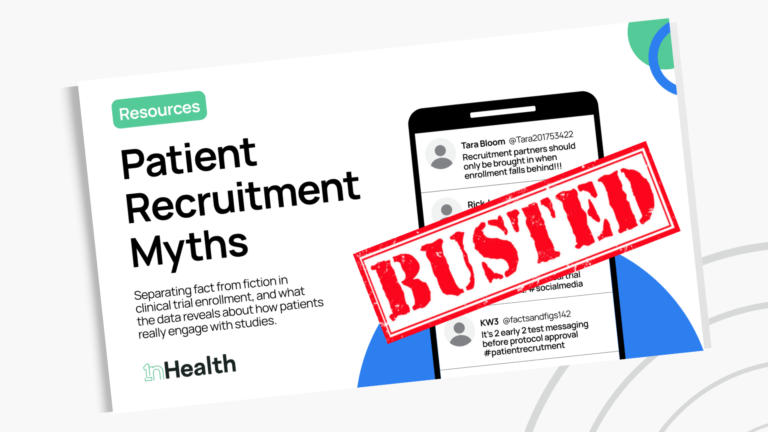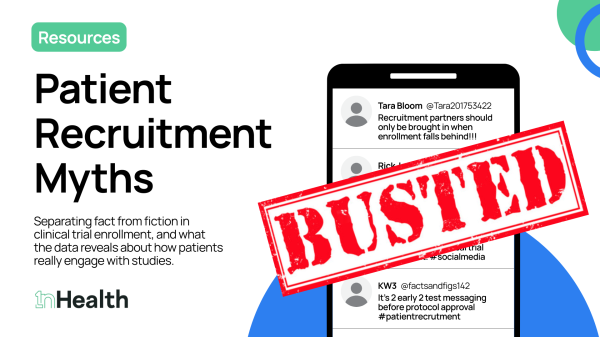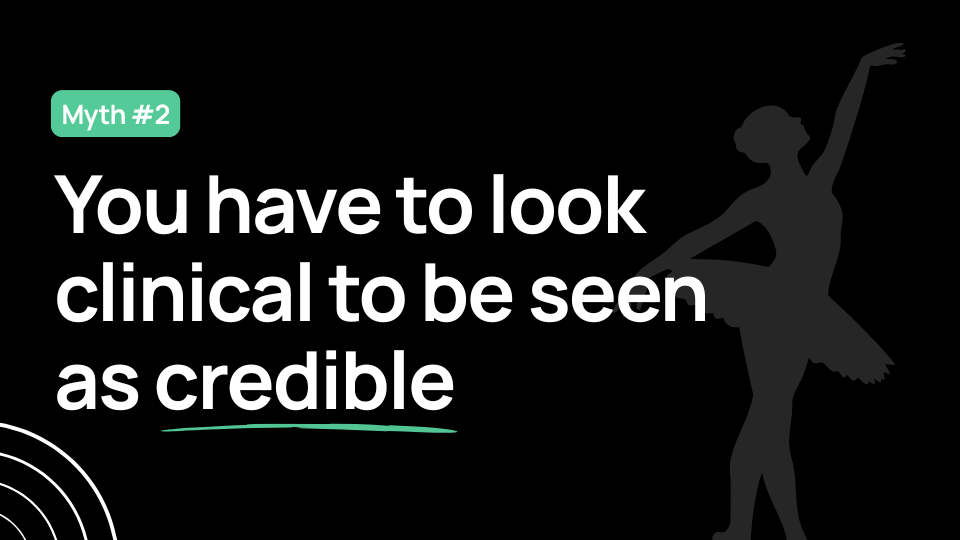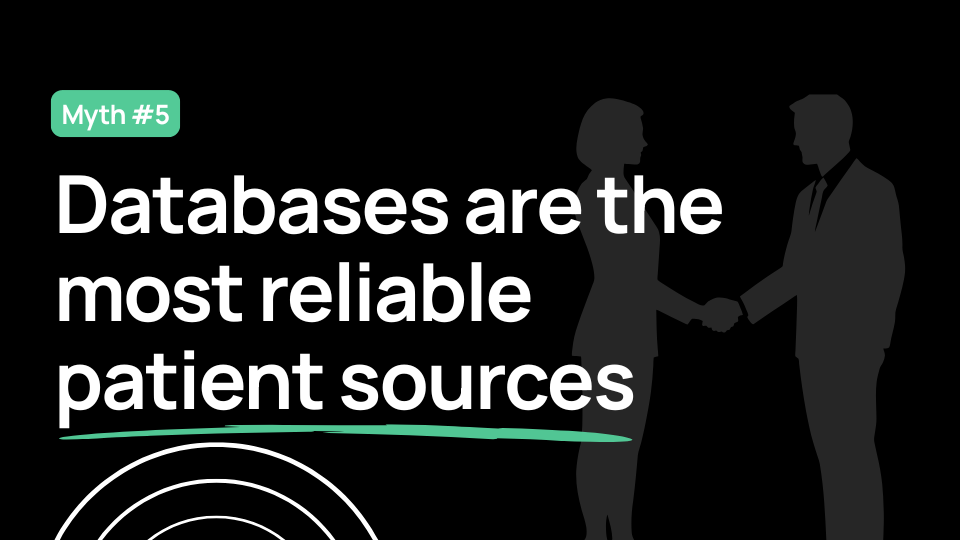Are databases the most reliable patient referral sources?
This is just one myth we busted!
Download the full eBook to explore all the data and discover what’s really driving quality in patient recruitment.
When familiarity creates blind spots in patient recruitment
In patient recruitment, familiarity can sometimes blur good judgment. Internal email lists and site patient databases often serve as the default first step, offering what feels like a warm, ready-made audience. These are people who have engaged with your organization or clinic before, and that sense of familiarity can create confidence that enrollment will move quickly. For many teams, tapping into these sources feels like the safest path to success.
Yet comfort does not always equal effectiveness. Relying too heavily on established internal channels can create a false sense of momentum that quickly fades. What begins as an easy win often reveals deeper challenges, including slow ramp-up times, limited reach, and diminishing response rates over time.

Why limiting recruitment to databases hurts enrollment
While site databases play an important role, they have clear limitations. Their reach is finite, and the information within them ages quickly as patients move, change contact details, or experience shifts in their health status. As these lists become outdated, they deliver fewer qualified leads, and outreach efforts often result in wasted time contacting individuals who do not meet even the most basic eligibility criteria.
Performance also varies widely from site to site, adding another layer of unpredictability to the process. Some sites excel in outreach while others lag, leading to uneven enrollment and missed milestones. Over time, these lists can also experience fatigue as open and response rates decline. What once felt like a reliable recruitment resource can quietly become a bottleneck that stalls progress and threatens study timelines.

The most reliable patient referral source is the one that keeps learning
Databases feel dependable because they are familiar, offering an immediate sense of control and access to known contacts. Yet static data cannot keep pace with how patients actually behave, search, and engage today. People’s health journeys are fluid, and their digital habits shift constantly across platforms, communities, and information sources. What feels reliable on paper often fails to reflect the real-world movements and motivations of patients.
True dependability in recruitment comes from flexibility: using real-time insights, testing, and continuous optimization to refine both who you reach and how you reach them. The more a recruitment strategy learns and evolves, the stronger and more sustainable its results become.
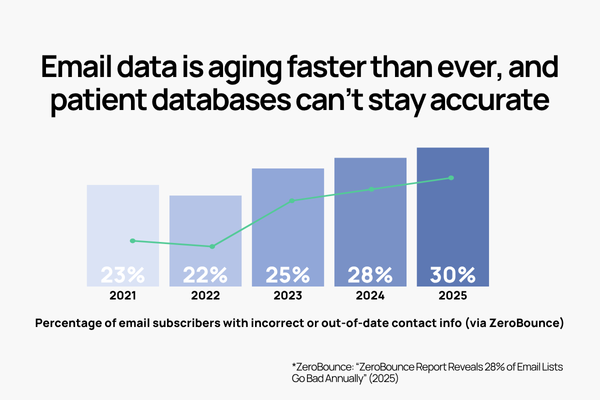
Email databases are no longer the reliable recruitment tools they once were. The latest ZeroBounce Email List Decay Report shows that email databases degrade by at least 28% each year, meaning that nearly one-third of your contacts could become unreachable in just twelve months.
Invalid addresses remain the biggest driver of decay, with catch-all emails and inactive accounts close behind. For patient recruitment, this reality translates to missed outreach, wasted media spend, and growing inefficiency in campaigns that rely on outdated or incomplete contact lists.
The value of a database lies not in its size, but in its accuracy and relevance. Static patient lists, no matter how carefully maintained, struggle to reflect real-world changes in contact details, health status, and engagement behavior. As patients move, switch providers, or lose interest, those “warm” leads quickly cool.
To maintain true reliability, recruitment strategies must prioritize live data, continuous validation, and audience insights that evolve in real time. Keeping pace with patients is what drives efficient enrollment and lasting engagement.
Case Study: Accelerated recruitment that no database could enroll
A sponsor tasked 1nHealth with recruiting 1,000 adults who had tested positive for COVID-19 within the past seven days and hadn’t been hospitalized, criteria too specific for traditional outreach and too recent for passive email databases.
1nHealth launched clear qualification pages and used automated SMS and email surveys to quickly collect demographics and health details, streamlining screening and eligibility checks.
The result: 1,000 participants enrolled in just 23 days, far ahead of schedule.
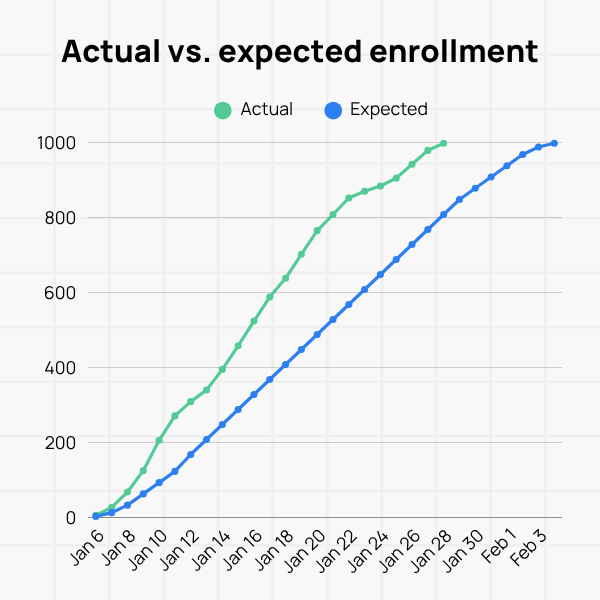
The importance of engaging patients in real-time
The window of opportunity to engage a patient for trial participation opens and closes faster than ever. Studies show that digital patient recruitment solutions can reduce recruitment time by up to 30% when outreach is responsive and aligned with patient behavior.
When messaging isn’t timed well, or when contact is delayed until after a patient’s peak interest has passed, the chance to create meaningful connection fades. Real-time engagement allows recruitment teams to catch that spark of readiness, turn it into action, and keep momentum moving forward.

Real-time engagement builds patient trust
Reaching patients in real time does more than improve response rates, it strengthens trust. Research shows that real-time support in clinical trials leads to higher patient satisfaction and stronger retention. When patients feel acknowledged, supported, and guided at the exact moment they are considering participation, they are far more likely to stay engaged. This immediacy turns interest into action and fosters long-term confidence in both the process and the study team.
Meeting patients in their moment of interest
Today’s patients move quickly between digital spaces, researching conditions, reading reviews, and exploring options on their own terms. Patient recruitment can no longer wait for a perfect “follow-up window.” It must align with the patient’s moment of intent—the time when curiosity, readiness, and opportunity intersect. Real-time engagement tools such as automated chat, adaptive landing pages, and instant follow-up make participation feel natural rather than forced. By meeting patients where they are and when they are ready, study teams accelerate recruitment, improve retention, and create a more patient-centric trial experience.
Are your patient recruitment strategies built for today's reality?
The myth that internal lists are always the most reliable source for recruitment is outdated. Today, real reliability means reach, speed, repeatability, and measurable quality. Direct-to-patient digital recruitment stands out as the most effective driver of all four. It’s time to rethink recruitment: Are your strategies stuck in the comfort zone, or ready to tap into the full potential of digital, audience-first solutions? If you want to see the difference a data-driven digital approach can make for your next trial, let’s talk.

